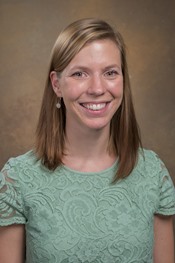Program Information
A Phantom Study to Assess the Variability in Radiomics Features Extracted From Cone-Beam CT Images
X Fave1,2*, D Fried1,2, L Zhang1, J Yang1, P Balter1, D Followill1, D Gomez1 , A Jones1, F Stingo1, L Court1 , (1) UT MD Anderson Cancer Center, Houston, TX, (2) UT Health Science Center Graduate School of Biomedical Sciences, Houston, TX
Presentations
SU-D-BRA-7 (Sunday, July 12, 2015) 2:05 PM - 3:00 PM Room: Ballroom A
Purpose: Several studies have demonstrated the prognostic potential for texture features extracted from CT images of non-small cell lung cancer (NSCLC) patients. The purpose of this study was to determine if these features could be extracted with high reproducibility from cone-beam CT (CBCT) images in order for features to be easily tracked throughout a patient’s treatment.
Methods: Two materials in a radiomics phantom, designed to approximate NSCLC tumor texture, were used to assess the reproducibility of 26 features. This phantom was imaged on 9 CBCT scanners, including Elekta and Varian machines. Thoracic and head imaging protocols were acquired on each machine. CBCT images from 27 NSCLC patients imaged using the thoracic protocol on Varian machines were obtained for comparison. The variance for each texture measured from these patients was compared to the variance in phantom values for different manufacturer/protocol subsets. Levene’s test was used to identify features which had a significantly smaller variance in the phantom scans versus the patient data.
Results: Approximately half of the features (13/26 for material1 and 15/26 for material2) had a significantly smaller variance (p<0.05) between Varian thoracic scans of the phantom compared to patient scans. Many of these same features remained significant for the head scans on Varian (12/26 and 8/26). However, when thoracic scans from Elekta and Varian were combined, only a few features were still significant (4/26 and 5/26). Three features (skewness, coarsely filtered mean and standard deviation) were significant in almost all manufacturer/protocol subsets.
Conclusion: Texture features extracted from CBCT images of a radiomics phantom are reproducible and show significantly less variation than the same features measured from patient images when images from the same manufacturer or with similar parameters are used. Reproducibility between CBCT scanners may be high enough to allow the extraction of meaningful texture values for patients.
Funding Support, Disclosures, and Conflict of Interest: This project was funded in part by the Cancer Prevention Research Institute of Texas (CPRIT). Xenia Fave is a recipient of the American Association of Physicists in Medicine Graduate Fellowship
Contact Email:


